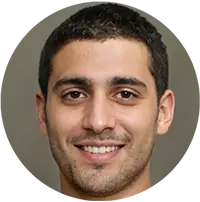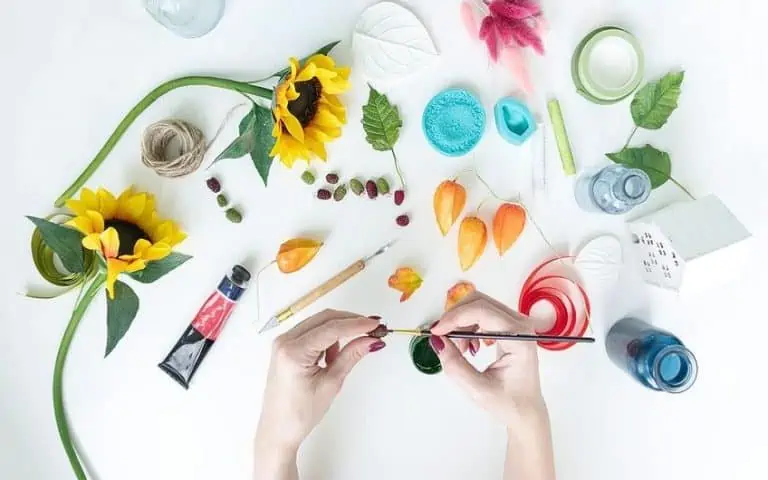How to Draw a Bunny Face – Do an Easy Bunny Head Drawing (10 Steps)
This post may contain affiliate links. We may earn a small commission from purchases made through them, at no additional cost to you.
Do you want to know how to draw a bunny? Or have you always wondered how to draw realistic fur? Do you think drawing fur is complicated and only suitable for advanced artists? Then we would like to convince you otherwise and show you how to draw a rabbit step by step. Through this simple bunny drawing tutorial, our guest author Sabrina Hassler shows you a simple process of how to draw a bunny.
Table of Contents
Simple Bunny Drawing
Rabbits are such beautiful animals – with their long ears, big googly eyes and fluffy fur. They are very popular all over the place. The fact that you rarely see them in nature also makes them even more interesting. With their gentle charisma and aesthetic look, they are of course perfect as a subject for drawing. I hope you have lots of fun with my easy bunny drawing instructions below.
Materials Needed for Drawing Rabbits
If you plan on doing a rabbit drawing, or any animal drawing, then you will need to be equipped with the right materials. Here are some of my favorite pieces of equipment to have on hand:
- A set of quality pencils. I like the size of H-4B (e.g. from Koh-I-noor or Faber Castell)
- A black crayon (I use Faber Castell Polychromos)
- Blending stump or cotton swab
- An eraser or an eraser pencil
- Fine, but heavy drawing paper or cardboard (ideally 250 g/m²)
How to Draw a Rabbit Step by Step
If you want to learn how to draw a bunny, then this is the right place to start. Follow these step by step instructions below for creating fantastic artworks.
Preparation
Before you start drawing, print out a photo of the bunny in black and white. The photo I used as a reference is by the wonderful photographer Deena Sveinsson. Here is the link to the photo. have all of your materials ready, and get comfortable in your workplace.
Step 1: Putting Together the Sketch
In the first step, we will construct the sketch. When doing this, you can follow the basic processes outlined below:
Tip: When drawing the sketch, use an H or HB pencil and never press too hard. This will allow you to erase guide lines and errors later on.
- At first glance, a bunny’s head can seem quite complicated, but if you break down the motif into geometric shapes, you can easily construct your sketch. Breaking the parts down is the best way to learn how to draw a bunny face.
- To do this, draw an elongated ellipse in the center of your paper to suggest the bunny’s face. Next, draw two more ellipses as ears that start in the upper third of the first ellipse and stick out a bit. Use your printed photo as a guide to get the angle of the ears right.
- Another ellipse (this time drawn in width) marks the cheeks of the bunny.
Tip: Break down your motif into simple basic shapes to learn how to draw a bunny face. This will help you to get the proportions right. This works for every motif!
- On my sketch, you can also see that the head is divided by a cross in the middle. The horizontal line shows you exactly where the eyes are and the vertical line shows you where the center of the face is. This will help you later when drawing the eyes, nose, and mouth.
- You can also roughly draw the outline of the body. Follow my sketch.

Step 2: Complete the Sketch
- By breaking things down in the first step, completing the sketch is now much easier. Now you can draw the eyes, nose, and mouth (as well as the soft chin) of the rabbit. Use the cross in the middle of the face as a guide.
- Next, soften and flow the contours of your bunny a bit. Imagine that the ellipses merge together. Also, adjust the shape of the ears a bit. If you look closely, you’ll notice that the ears are pointed at the top and are not perfect ellipses. When you are satisfied with your sketch, you can erase all the construction lines.
Step 3: Light Shading
- Now we’ll start shading the drawing.
- First, take a close look at your printed photo and try to narrow down the middle and darkest areas of the photo. The photo is made up of many different shades of gray – now focus only on the middle and darkest shades of gray. Then fill in these areas on your drawing with a pencil. It’s best to use an HB or 2B pencil. Be careful not to get too dark already, because you can always go darker later.
Leave the light areas on the photo blank (e.g. around the eyes or middle of the ears).

Step 4: Darkening
- In the next step, you take a softer pencil, e.g. 4B, and darken the very dark areas again. Which areas look almost black in the photo? Now fill in exactly these areas on the sketch with a pencil. These are, for example, the eyes (attention: leave out the highlight!), the nose, the mouth, and the inside of the ears.
Note: A soft pencil contains more graphite than a hard one and is therefore darker. However, it is also more difficult to erase.
Step 5: Soft Transitions
- Next, take a blending stump or cotton swab and smooth out the transitions. So basically, you’re gently wiping over your pencil strokes, making them softer and more even. This way, even the smallest spaces between the strokes will be streaked with a bit of graphite and the drawing will look much less rough right away. If you want to achieve a rougher look, you can skip this step.

Step 6: Erase Highlights
- For the 6th step, you need an eraser pencil or alternatively a pointed eraser. With a pointed eraser, you can erase single strokes very precisely. I, therefore, recommend using one of these items. Now look at the bunny photo again and try to find the brightest parts of the photo. You probably blurred some of these almost white areas with the blending stump in step 5. So now you should touch them up a bit with the eraser. On my drawing, you can see which parts I erased.
The practical thing about a precise eraser is that you can use it to erase individual hairs. Erase specific light hairs and achieve a realistic effect.
Step 7: Drawing the Coat
- Now we can draw a realistic coat. You have already laid the foundation for this in the previous steps. Take a particularly dark pencil – 4B to 9B – and draw lots of individual hairs with it.
The hair on the head and ears of a rabbit is much shorter than the hair on the body. This means that your strokes on the head must be short and the strokes on the body somewhat longer and more curved.
- On the nose, the hair is even so short that you should almost draw dots instead of strokes. Pay attention to the direction of hair growth! Not all hairs grow in the same direction. You should also make this visible in your drawing. Take a look at this picture for clarification:

Step 8: Contrast
- Give your drawing more depth by using a black colored pencil to make the black areas even darker. This will increase the contrast between light areas and dark areas, making your drawing much more realistic and three-dimensional.
Tip: Use an opaque black colored pencil to draw black areas. Crayons are even more opaque than pencils and they shimmer less.
- The darkest parts of your drawing will also be the first to attract the viewer’s eye. That’s why you should add a lot of black to the eyes, nose, and mouth. This will make the eyes much deeper and more realistic.

Step 9: Details
- In this last step, you can add a few details to your bunny. For example, the long, protruding whiskers that are characteristic of a rabbit are important. Because these long hairs are very thin and rather light, you should use a hard pencil (H). A hard pencil will not dull quickly. This will help you to maintain a constant stroke width.
Move the pencil across the paper in dynamic, rapid movements. Press firmly at the beginning of the stroke and then ease off (reduce the pressure) toward the end of the stroke. This will make your strokes curved evenly and thinner towards the end.
Step 10: The Final Result
And now you know how to draw a bunny! I hope you enjoyed drawing the bunny as much as I did and my tutorial on how to draw a bunny in pencil in just 10 steps was educational for you. This is my finished drawn bunny:

This 10-step bunny drawing guide provides a perfect basis for teaching you how to draw a rabbit. The basic steps can also be applied to all kinds of other animals. We hope that this bunny drawing guide has inspired your creativity. Happy drawing!

Sabrina Hassler
Sabrina Hassler is a freelance illustrator and artist from Austria. Her specialties are detailed pencil drawings - she especially enjoys drawing people and animals. Sabrina attended a 5-year art school and then studied elementary school teaching and music education. Since 2018 she has been working as a freelance illustrator and artist. She mostly works with advertising agencies and publishers and many of her illustrations have already appeared in books or on products. Besides drawing, her passion is to share her knowledge and techniques with other creatives.
Learn more about Israel Benloulou and about us.









